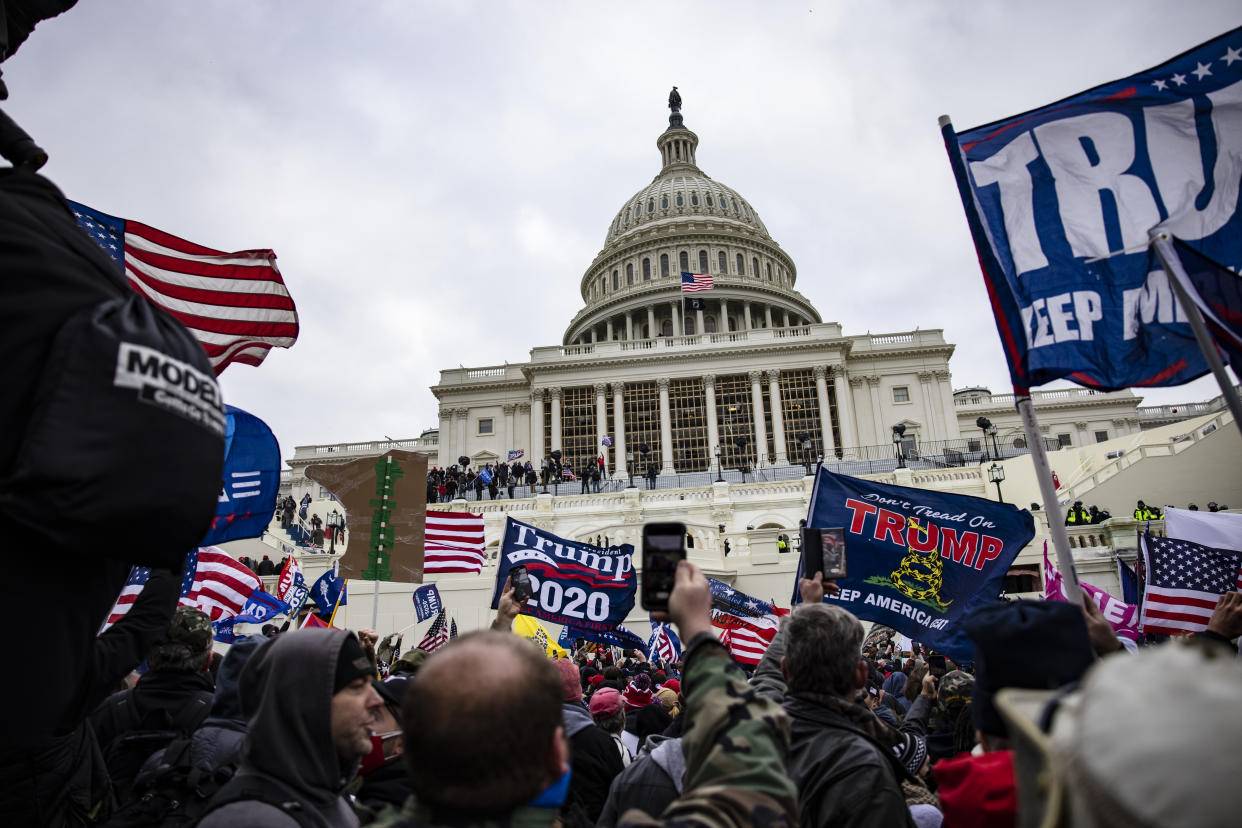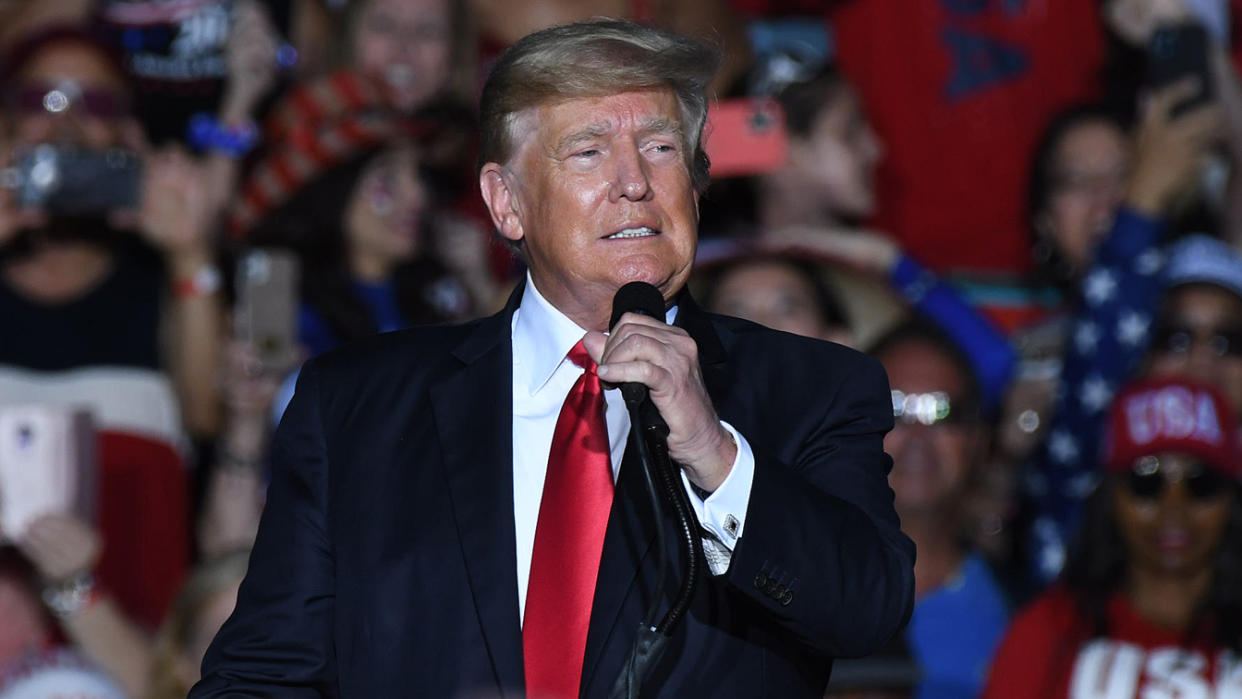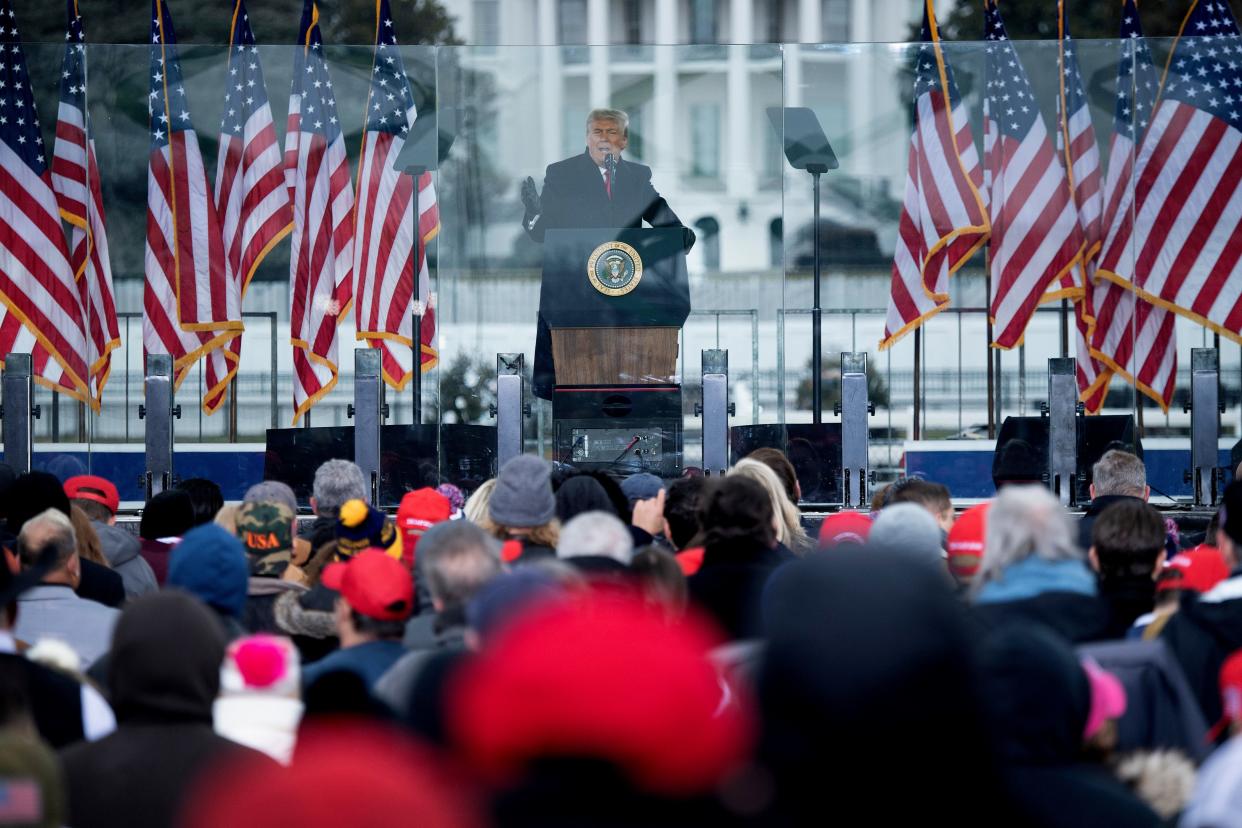Trump turns to an old tactic to battle his social media suspension: Lawsuits
Frustrated by his inability to use social media, former President Donald Trump turned to a tactic he has used before as another way of amplifying his voice in the public square: specious lawsuits.
Trump announced Wednesday that he was leading a class-action lawsuit against the social media companies that suspended his account after his supporters attacked the U.S. Capitol on Jan. 6. At the time of the assault, Congress was certifying the 2020 election result, in which Trump lost to Joe Biden. Trump was accused of inciting the riot, in part by spreading lies on Twitter that the election was rigged.
"We're demanding an end to the shadow banning,” the former president said Wednesday, “a stop to the silencing and a stop to the blacklisting, banishing and canceling that you know so well."

The lawsuit has no legal standing, since it is a free speech claim against private companies, which are not governed by the First Amendment. That amendment is intended to prevent the government from censoring speech, and Trump’s free speech is under no governmental constraints.
Trump claimed in public remarks that the big tech companies “ceased to be private” when the government passed Section 230 of the Telecommunications Act of 1996, but that argument has been easily debunked.
Section 230 provides legal liability to online platforms that are not publishers, but “it is the First Amendment — not Section 230 — which enables content moderation,” according to two lawyers with expertise in free speech and technology law who published a piece on the subject in February on the Lawfare website.
“Websites have the same constitutional right as newspapers to choose whether or not to carry, publish or withdraw the expression of others. Section 230 did not create or modify that right. The law merely ensures that courts will quickly dismiss lawsuits that would have been dismissed anyway on First Amendment grounds — but with far less hassle, stress and expense,” wrote Berin Szóka and Ari Cohn. “At the scale of the billions of pieces of content posted by users every day, that liability shield is essential to ensure that website owners aren’t forced to abandon their right to moderate content by a tsunami of meritless but costly litigation.”

Trump’s lawsuit appeared largely to be a publicity stunt, but it didn’t serve only as a grab for attention. It also helped him push his anti-Big Tech message, which plays into his persistent complaints that he has been victimized by the establishment, and it distracted from real legal problems dogging his business. The Trump Organization and its chief financial officer were indicted last week on tax fraud charges.
Just last year, Trump used litigation as a messaging tactic after the election. The lawsuits provided a patina of credibility to his lies that the election results were rigged, since supporters who believed Trump’s fabrications could point to the lawsuits as something substantive — even though the suits were uniformly dismissed, often by judges appointed by Trump himself.
On Wednesday, the former president's announcement coincided with a release by Republicans on the House Judiciary Committee who announced their desire to speed up the process of breaking up big tech companies.
Lawsuits have been a favorite tool of Trump’s to intimidate and distract throughout his business and media career.
“Trump saw litigation as being only about winning. He sued at the drop of a hat. He sued for sport; he sued to achieve control; and he sued to make a point. He sued as a means of destroying or silencing those who crossed him,” wrote the former federal prosecutor James D. Zirin in his 2019 book, "Plaintiff in Chief: A Portrait of Donald Trump in 3,500 Lawsuits."

Zirin, who describes himself as a lifelong Republican, told the American Bar Association Journal that he wrote the book after beginning to look at the influence on Trump of the lawyer Roy Cohn. Cohn advised Sen. Joseph McCarthy in his scorched-earth witch hunt against political enemies in the 1950s, in the guise of rooting out communist influence in the government.
“Cohn really taught Trump everything he knows about waging what I call asymmetrical warfare: weaponizing the law and using litigation as a means to attain the various objectives that he had,” Zirin said.
“Cohn’s recipe was fight, and he taught Trump the tools he used. No. 1 is: If you’re charged with anything, counterattack. Rule No. 2 is: If you’re charged with anything, try to undermine your adversary. Rule No. 3 is: Work the press. Rule No. 4 is: Lie. It doesn’t matter how tall a tale it is, but repeat it again and again. Rule No. 5 is: Settle the case, claim victory and go home,” Zirin said.
Trump was suspended from Facebook on Jan. 6, the day his supporters violently assaulted the Capitol and attempted to stop the certification by Congress of the 2020 election results.
Trump had egged on his supporters for months with baseless lies about a rigged election, and then did so again on Jan. 6 in a speech on the National Mall, where he urged them to march to the Capitol and “fight like hell.”

The post that triggered Facebook’s suspension was one in which he seemingly celebrated the assault and urged his followers to “remember this day forever.”
Trump was impeached by the House of Representatives for inciting an insurrection, and a majority of senators voted to convict him on these grounds. Seven Republicans joined all 50 Democrats in the vote, which fell short of the 67-vote supermajority required for a conviction.
Twitter’s suspension of Trump’s accounts was permanent. But on Jan. 21, Facebook referred the decision about whether to reinstate him to the Facebook Oversight Board, a 20-person panel established in 2019. In May, the board upheld the suspension but called on Facebook to clarify its policy on the use of its accounts by politicians and celebrities.
In June, Facebook announced it would keep Trump's suspension in place for two years and then reassess its decision, based in part on “whether the risk to public safety” — created by Trump’s inflammatory rhetoric and relentless lying about the election — remained a concern.
The former president has shown no remorse for his central role in the violence of Jan. 6, which came closer than many had imagined was possible to overturning American democracy. He has ramped up his lies about the election to a pace that is nearly as intense as it was in the days following his loss to Biden last fall.
____
Read more from Yahoo News:


